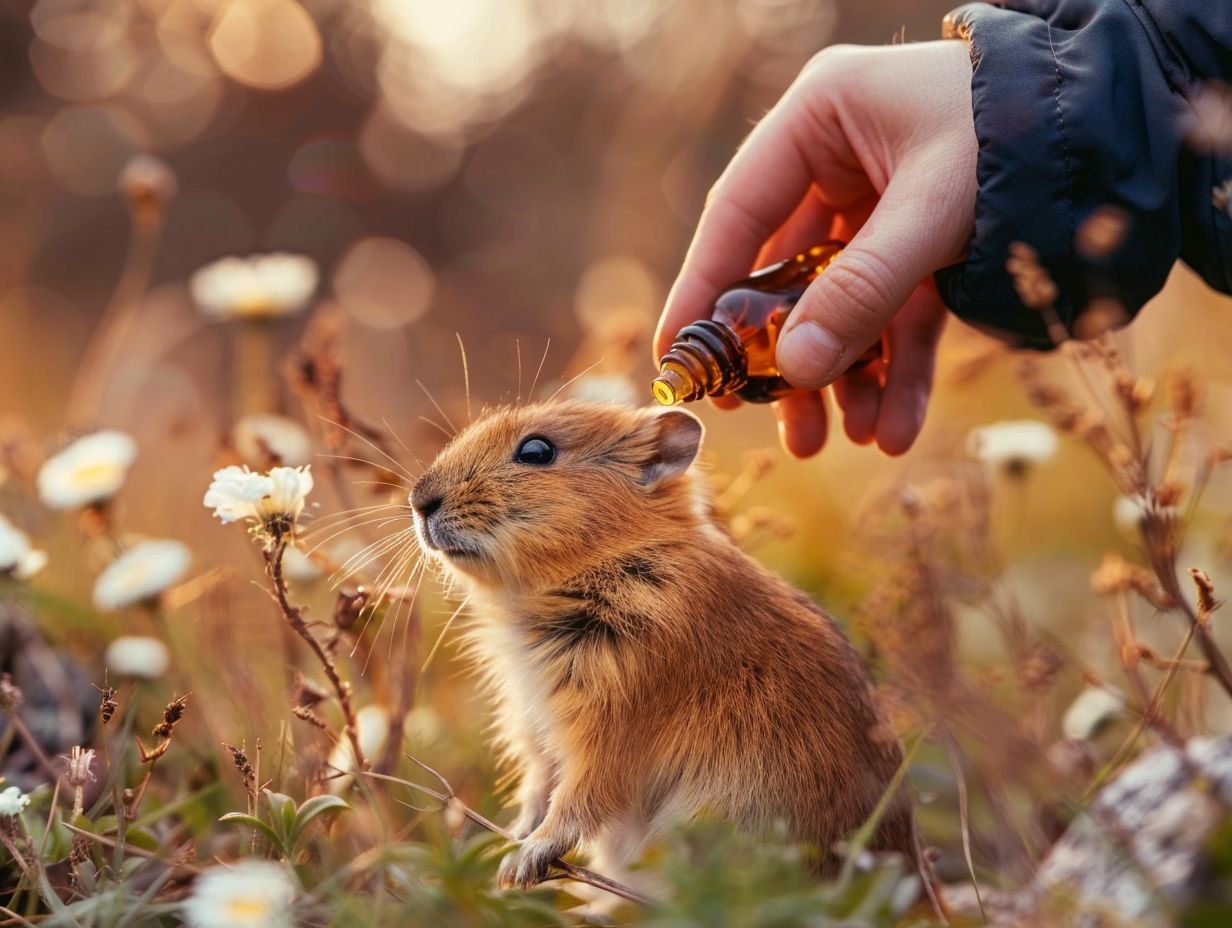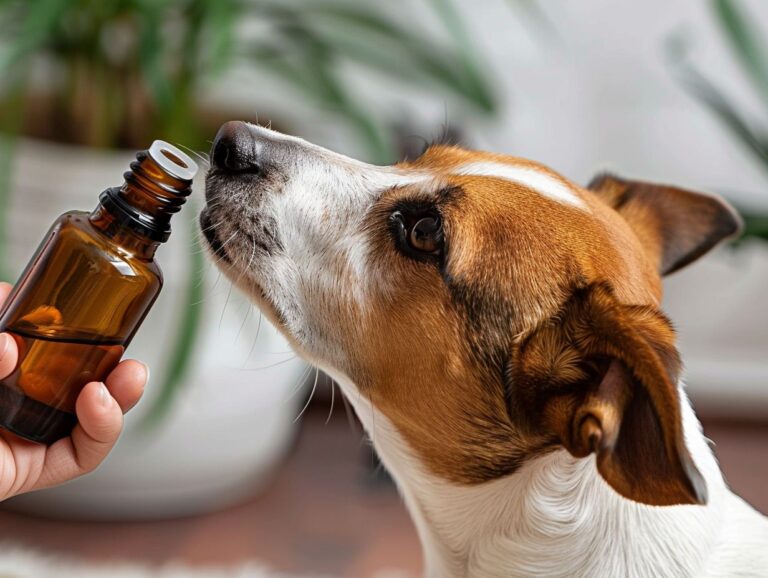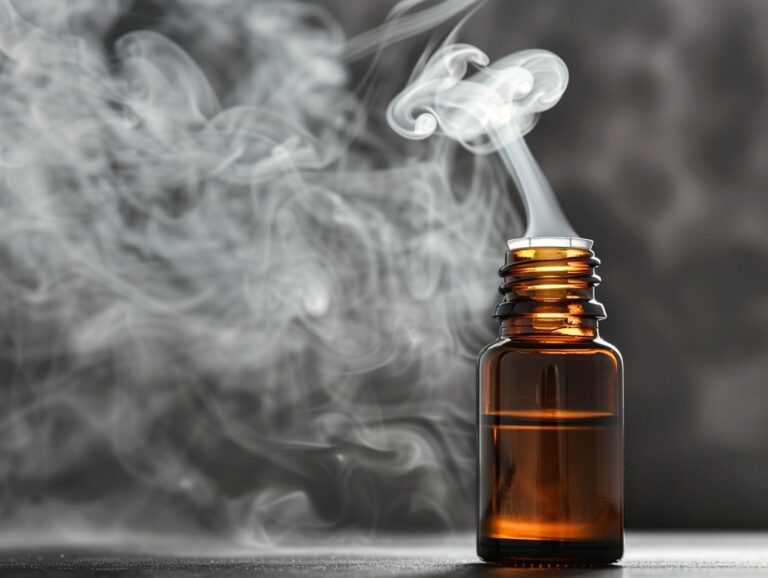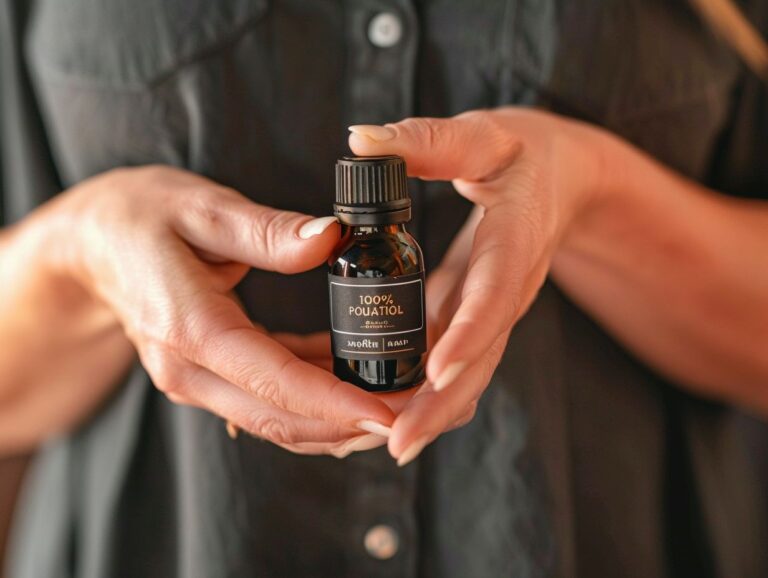Why is It Important the Essential Oils Be Used Carefully With Animals
Essential oils have gained popularity for their various therapeutic benefits, but when it comes to using them with animals, caution is key.
In this article, we will explore the common methods of using essential oils with animals, the potential risks and side effects, as well as the types of essential oils that should not be used.
We will also discuss the precautions that should be taken and the recommended dilution rates to safely use essential oils with animals.
Join us as we uncover the benefits and potential dangers of using essential oils with our furry friends.
Key Takeaways:
What Are Essential Oils?
Essential oils are natural compounds extracted from plants that capture the plant’s scent and flavor or ‘essence’. These oils are commonly used in aromatherapy for their therapeutic benefits in both humans and animals.
Extraction of essential oils involves various methods such as steam distillation, cold pressing, or solvent extraction, depending on the plant material. The concentrated oils contain the beneficial properties of the plant, offering a holistic approach to improving overall well-being.
In aromatherapy for animals, essential oils can be diluted in carriers like coconut oil and applied topically or diffused to create a calming atmosphere. Aromatherapy can help reduce stress, ease anxiety, alleviate joint pain, and promote relaxation in pets, making it a popular option for holistic pet care.
How Are Essential Oils Used With Animals?
Using essential oils with animals involves employing these natural plant extracts to promote physical and emotional well-being in pets and other animals. The application of essential oils in veterinary care is gaining popularity due to their holistic benefits.
Whether it’s diffusing calming lavender oil to soothe an anxious dog or applying diluted peppermint oil to alleviate joint pain in aging cats, the use of essential oils offers a gentle and natural approach to animal wellness. Aromatherapy not only supports the physical health of pets but also aids in relaxation and stress reduction, making it a valuable tool in managing behavioral issues. As pet owners increasingly seek natural remedies for their furry companions, veterinarians are integrating aromatherapy into their practices to provide comprehensive care options.
What Are the Common Methods of Using Essential Oils with Animals?
Common methods of using essential oils with animals include diffusion, topical application, and oral ingestion. It is essential to dilute essential oils with a carrier oil like V-6 Vegetable Oil Complex for safe use on pets.
When diffusing essential oils, make sure your pet has the option to leave the room if they find the scent overpowering.
Topical application requires careful consideration of the animal’s size and species to determine the appropriate dilution ratio.
Oral ingestion should only be done under the guidance of a veterinarian to prevent any adverse reactions.
Always store essential oils away from pets to avoid accidental ingestion, and never apply them near sensitive areas such as eyes or mucous membranes.
What Are the Risks of Using Essential Oils with Animals?
While essential oils offer numerous benefits, there are inherent risks associated with their use in animals. Understanding the potential risks is crucial to safeguarding the well-being of pet parents’ beloved companions.
Animals, especially cats and dogs, can have heightened sensitivities to certain essential oils, due to their unique physiology. For instance, cats lack certain liver enzymes that help metabolize essential oils, making them more susceptible to toxicity. It’s imperative to dilute essential oils properly and avoid direct application on pets’ skin to prevent adverse reactions.
The choice of essential oils is vital; some oils can be highly toxic to animals, even in small amounts. Pet owners must also be cautious about diffusing oils in the air as pets may ingest them by licking their fur. Consulting a veterinarian or an animal aromatherapist before using essential oils on pets is essential to ensure the safety and well-being of furry friends.
What Are the Potential Side Effects of Essential Oils on Animals?
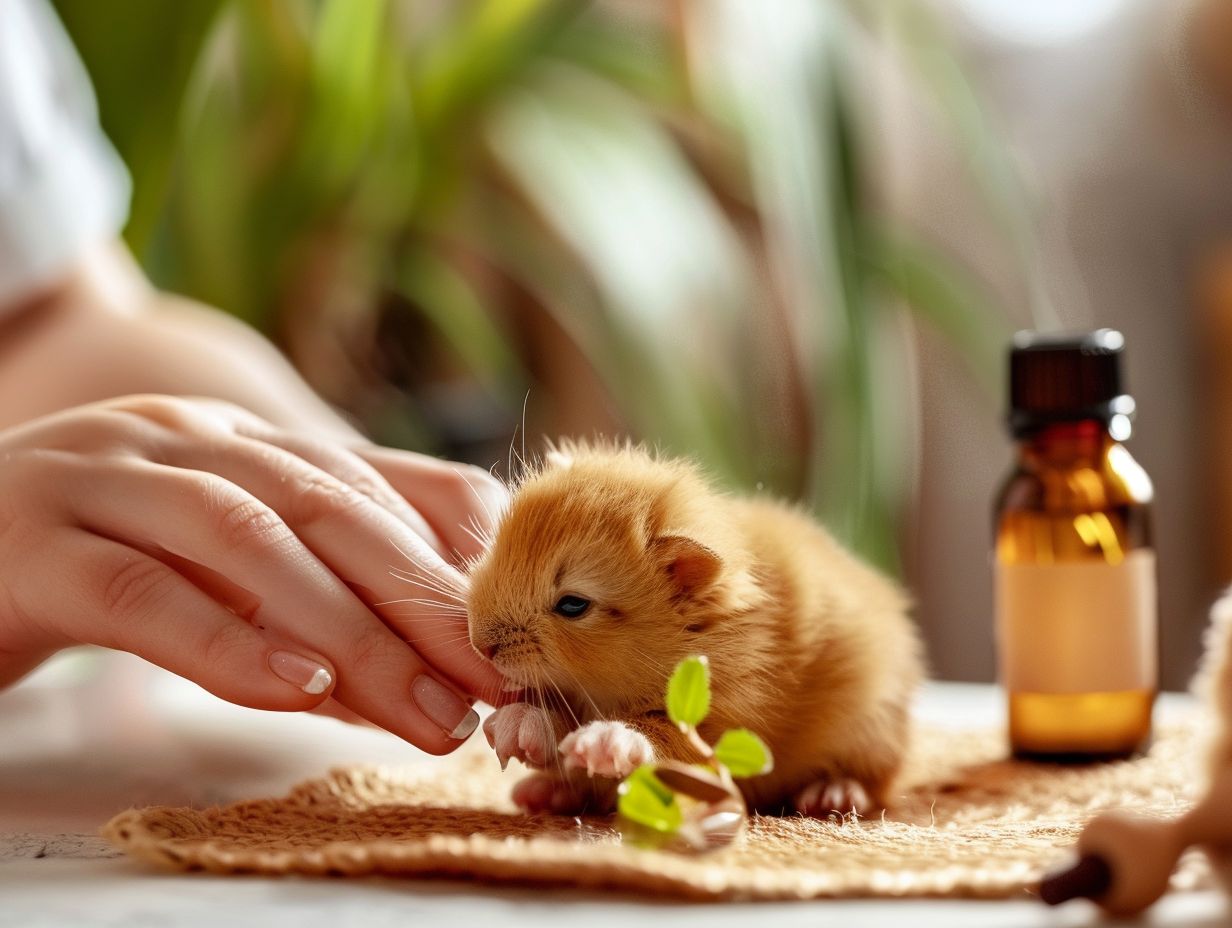
It is crucial for pet owners to be vigilant and observant of any signs of discomfort or unusual behavior in their furry companions after introducing essential oils into their environment.
One common side effect is skin irritation, which can manifest as redness, itchiness, or even a rash on the animal’s skin.
Gastrointestinal upset is another potential issue, leading to symptoms like vomiting, diarrhea, or excessive drooling.
Respiratory issues may also arise, causing coughing, sneezing, or difficulty breathing in pets exposed to certain oils.
Not all animals react the same way to essential oils, so it is important to start with small amounts and observe how each individual pet responds.
Can Essential Oils be Toxic to Animals?
Essential oils have the potential to be toxic to animals, especially if used improperly or in high concentrations. Certain oils can pose significant health risks to pets and should be approached with caution.
It is essential for pet owners to recognize the dangers associated with specific essential oils when it comes to their furry companions.
- Lavender oil may seem harmless, but when ingested by pets, it can lead to symptoms like vomiting, diarrhea, and depression.
- On the other hand, tea tree oil is highly toxic to both dogs and cats and can cause tremors, weakness, or even liver damage.
Understanding these risks and knowing the signs of poisoning is crucial for maintaining the well-being of your beloved animals.
What Are the Dangers of Ingesting Essential Oils for Animals?
Ingesting essential oils can be dangerous for animals and may lead to poisoning, digestive issues, and neurological symptoms. Pet parents should be cautious when considering oral administration of essential oils to their pets.
Essential oils contain potent compounds that can be toxic to animals, especially when ingested in high concentrations. Animals lack the necessary enzymes to metabolize these substances efficiently, making them more susceptible to adverse effects.
Some common essential oils such as lavender, tea tree, and eucalyptus can cause gastrointestinal upset, liver damage, and even central nervous system depression in pets. It’s crucial for pet owners to understand that what may seem harmless to humans can be hazardous for their furry companions.
What Types of Essential Oils Should Not Be Used With Animals?
Certain essential oils should not be used with animals due to their toxicity and adverse effects on pet health. Understanding which oils are harmful is essential for responsible pet care.
Essential oils like tea tree, eucalyptus, pennyroyal, and wintergreen can be harmful to pets when used inappropriately. These oils contain compounds that can be toxic to animals and may lead to symptoms like vomiting, diarrhea, lethargy, and even neurological issues. Animals, especially cats and smaller pets, are more sensitive to the concentrated forms of these oils, making them more susceptible to adverse reactions. It’s crucial for pet owners to consult with a veterinarian before using essential oils around their pets to ensure their safety and well-being.
Are Some Essential Oils Harmful to Specific Types of Animals?
Certain essential oils can be harmful to specific types of animals, such as cats, due to their unique physiology and sensitivity to certain compounds. Pet owners should be aware of which oils pose a risk to their pets.
Pets like dogs, and cats have a heightened sensitivity to essential oils like tea tree, citrus, and peppermint, which can cause adverse reactions ranging from skin irritation to respiratory issues due to their inability to metabolize certain substances present in these oils.
Cats are particularly susceptible because they lack certain liver enzymes needed to process these compounds effectively, making them more vulnerable to toxic effects. It’s crucial for pet owners to keep these oils out of reach and opt for pet-safe alternatives to ensure the well-being of their furry companions.
What Precautions Should Be Taken When Using Essential Oils with Animals?
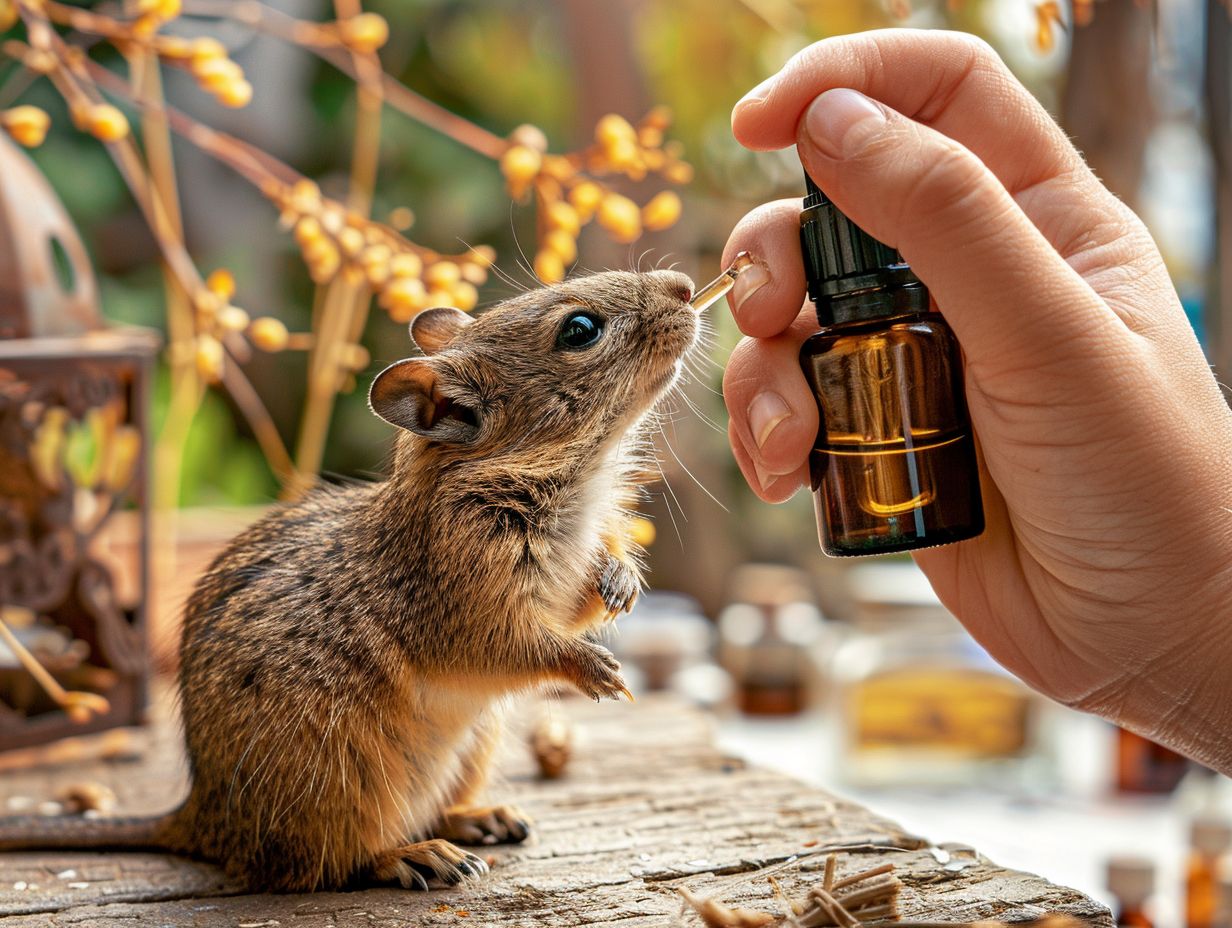
One important aspect to remember is never to apply essential oils directly to pets without proper dilution as their sense of smell is much stronger than humans. It is recommended to use a carrier oil such as coconut or olive oil for dilution, especially for cats and smaller pets, to prevent skin irritation.
Always keep essential oils out of reach of pets to avoid accidental ingestion, which can be harmful. Monitoring is key; observe your pet’s behavior closely after use to ensure there are no adverse reactions. In cases of sensitivity or discomfort, discontinue use immediately and seek advice from a veterinarian.
How Can Essential Oils Be Safely Used with Animals?
Essential oils can be safely used with animals by diluting them properly, applying them topically, and observing pet reactions.
When diluting essential oils for pets, always remember that their sense of smell is much stronger than humans, so a little goes a long way. The most common method is to mix a few drops of essential oil with a carrier oil such as coconut or olive oil. For application, it’s best to avoid sensitive areas like the eyes, nose, and genitals and instead focus on areas with less hair. Regularly monitor your pet for any signs of distress or allergies, and discontinue use if any adverse reactions occur.
What Are the Recommended Dilution Rates for Using Essential Oils with Animals?
Recommended dilution rates for using essential oils with animals vary depending on the species and size of the pet. Properly diluted oils are essential to prevent skin irritation and other adverse reactions in pets.
In terms of smaller pets such as cats and small dogs, it’s crucial to use lower dilution rates to ensure their safety.
On the other hand, larger animals like horses may require higher dilutions due to their size and tolerance levels.
It’s also important to take into consideration the sensitivity of certain species when diluting essential oils.
Consulting a veterinarian or an animal aromatherapist can provide valuable insights on the appropriate dilution ratios for different animals.
What Are the Best Essential Oils to Use for Animals?
Choosing the best essential oils for animals involves selecting oils that are safe, non-toxic, and well-tolerated by pets. Certain oils like lavender and chamomile are popular choices for their calming and soothing effects on animals.
These essential oils can be diffused in the air or applied topically to help pets relax during stressful situations, such as thunderstorms or vet visits.
- Lavender is not only known for its calming properties but also has antibacterial and anti-inflammatory benefits, making it a versatile option in pet care.
- Chamomile is gentle and ideal for soothing skin irritations or aiding in digestive issues in pets.
When using essential oils on animals, it is crucial to dilute them properly and always consult with a veterinarian to ensure the safety and effectiveness of the chosen oils.
What Are the Benefits of Using Essential Oils with Animals?
The benefits of using essential oils with animals include stress reduction, skin health improvement, and emotional support for pets. Aromatherapy can enhance the overall well-being of animals when used correctly.
Stress reduction in pets is particularly important as anxiety and fear can lead to various health issues such as digestive problems and decreased immune function. Essential oils like lavender and chamomile are known for their calming effects on pets, helping them relax in stressful situations. The use of essential oils can promote healthy skin in pets, soothing irritations and providing natural nourishment.
When diffused or applied topically, these oils can also create a positive environment that encourages positive behavior and emotional balance in animals.
Can Essential Oils Benefit Animals in the Same Way They Benefit Humans?
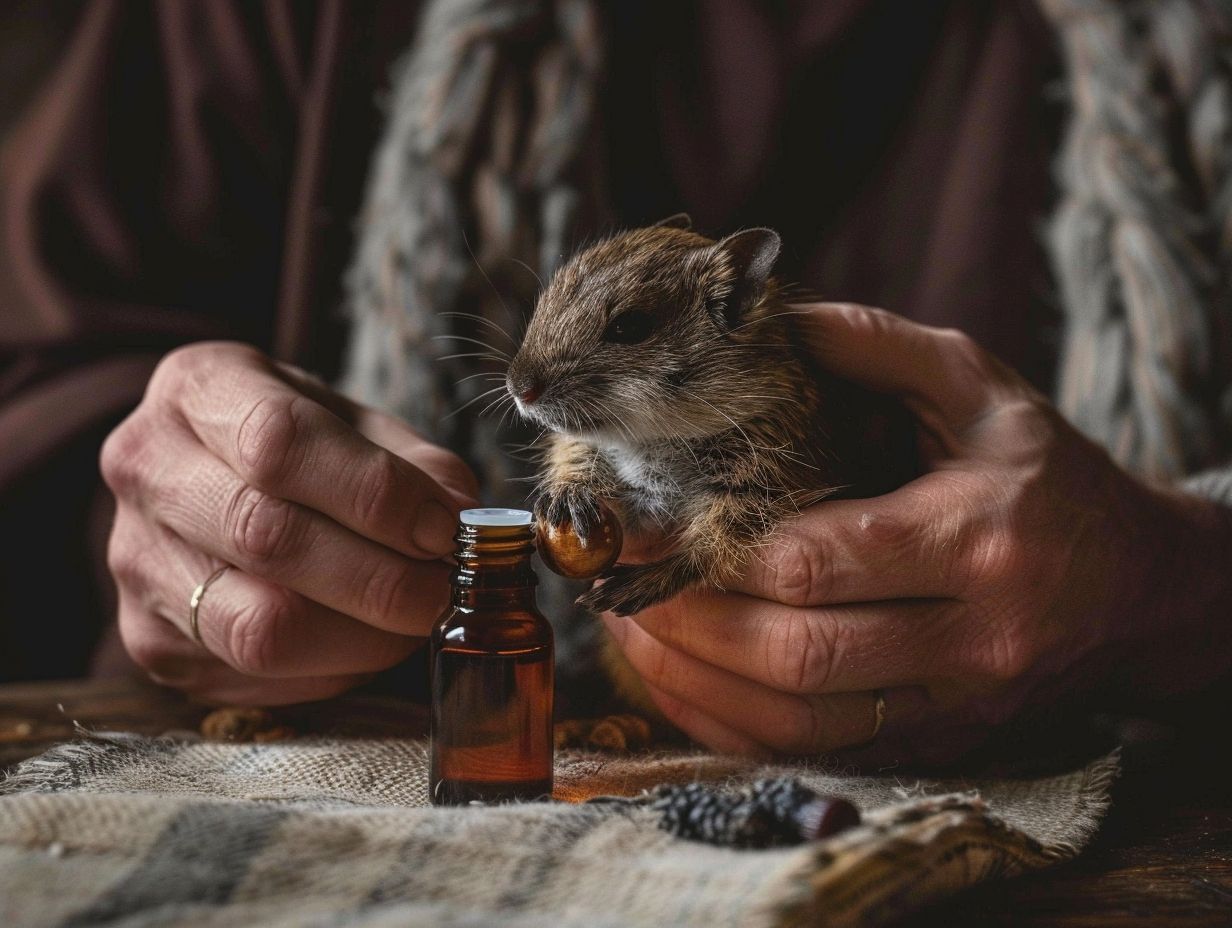
When used properly, essential oils for animals serve as natural remedies that support the immune system, reduce inflammation, and alleviate anxiety. Like humans, pets can reap the benefits of aromatherapy through diffusing essential oils or applying them topically.
Essential oils can aid in repelling pests such as fleas and ticks, providing a holistic approach to pet care. The shared advantages of essential oils for animals and humans lie in their ability to support a balanced state of both body and mind, promoting overall health and well-being.
Frequently Asked Questions
Why is it important to use essential oils carefully with animals?
Using essential oils on animals can have serious consequences if not used correctly. Animals have different physiological systems than humans and may react differently to essential oils. It’s important to use caution and do your research before using essential oils on animals.
What are the potential risks of using essential oils on animals?
Some essential oils can be toxic to animals, especially if they are ingested or used in large amounts. Other oils may cause skin irritation or allergic reactions. It’s important to know which oils are safe to use and in what quantities before using them on animals.
Which essential oils are safe for use on animals?
Some essential oils that are generally safe for use on animals include lavender, chamomile, and frankincense. However, it’s important to dilute them properly and use caution when using them on animals. Certain oils, like tea tree and peppermint, should never be used on animals.
How should essential oils be diluted for use on animals?
Essential oils should always be diluted when using them on animals. The proper dilution ratio will depend on the type of animal and the oil being used. It’s best to consult with a veterinarian or a trained aromatherapist for guidance on dilution ratios.
Can essential oils be harmful to certain animals?
Yes, essential oils can be harmful to certain animals. Cats and birds, in particular, are known to be sensitive to essential oils and should not be exposed to them. Dogs and horses can also have adverse reactions to certain essential oils, so it’s important to be cautious when using them on these animals.
Are there any alternative methods for using essential oils with animals?
Yes, there are alternative methods for using essential oils with animals, such as diffusing them in the air or using hydrosols instead of pure essential oils. These methods can provide the therapeutic benefits of essential oils without direct contact with the animal’s skin.

